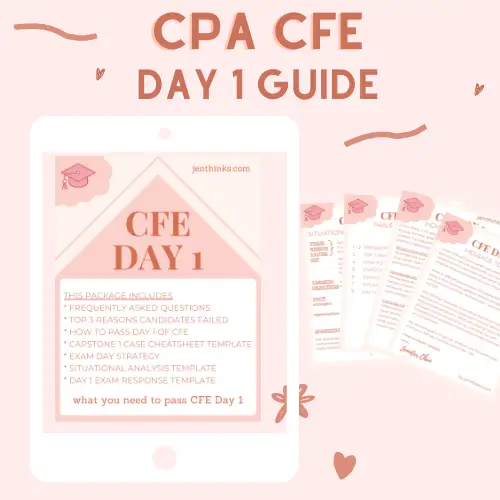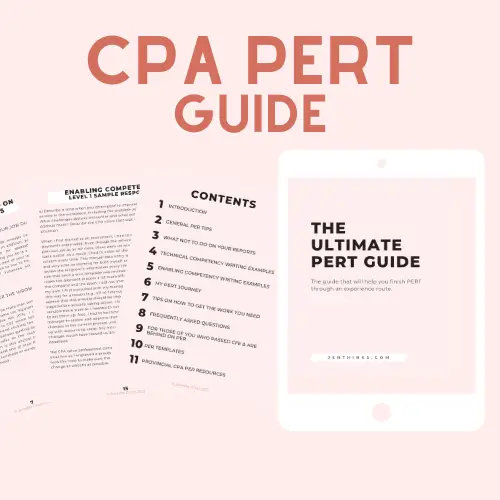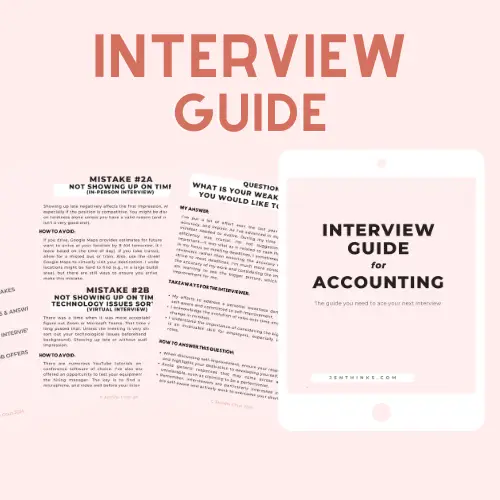CPA Alberta has been hosting a series of virtual CPA PEP Talks that are perfect for candidates all over Canada. Since I am writing the CPA CFE in Sept and starting Capstone 1 in May, I signed up for the Capstone 1 session as soon as it was announced. Andrea Au, a successful 2020 CFE writer, led the 45-minute presentation and provided candidates with what to expect from Capstone 1 and valuable tips on how to do well.
For those of you who couldn’t make the event or didn’t know about it (follow them on Instagram so you don’t miss out again), I am sharing what I have learned at the CPA PEP Talk from Andrea and others on the internet.
Read all of my CPA CFE posts here
What Is Capstone 1? What Do We Need to Do?
Capstone 1 focuses on soft skills and group work. Candidates are evaluated based on a written report and an oral presentation. Depending on what the social distancing rules are when you take Capstone 1, you might be presenting to a panel in person or submitting a pre-recorded presentation video to the panel.
The entire module focuses on one big case candidates normally refer to as the Capstone 1 case. You are going to want to be familiar with your Capstone 1 case as your CFE Day 1 case is based off of that (e.g., the same company but fast-forward to 4 years in the future).
During the Capstone 1 module, you and your group are expected to meet regularly and work on the written report individually and as a group. The written report is required to be submitted in 3 parts (March 2021: to be verified as the info I found was dated). At the end of your Capstone 1 module, you will either submit your recorded presentation or present in person.
The panel will have some questions for your group relating to your presentation so be prepared to answer them. These questions will be asked live if you were presenting in person and after-the-fact if you were submitting the video.
How Much Time Should You Budget for Capstone 1?
I asked Andrea this question during the Q&A at the CPA PEP Talk because CPA normally recommends 15 hours per week for PEP modules. Andrea thought this was in line with how much time she spent herself as well. She reported having 1 to 2 team meetings per week for 1 to 1.5 hours each in addition to spending time on her parts on the written report.
When I looked online, the time varied. Some reported spending as little as 3 hours a week and some, were like Andrea, spent 10 to 15 hours per week. Many have highlighted the most important factor was how competent and committed your group members are.
What Were Andrea’s Tips for Doing Well in Capstone 1?
I have to start this off by saying that I felt Andrea had covered pretty much everything. Obviously, since this is written before I start Capstone 1 in May, I have no personal experience to back up my claim yet. However, her presentation has offered some solid advice that I think if you follow most of them, you will do well.
You Don’t Need to Memorize the Capstone 1 Case for CFE Day 1
… but you should get familiar with where the important parts are (e.g., strategic objectives, KPIs). Doing so will save you time on Day 1 of CFE as you will be able to refer to those facts quickly.
Apply All The PowerPoint Presentation Rules
Apply all the rules for a great PowerPoint presentation you know: from choosing a standard font, font size, order of quantitative and qualitative, header, bullet points to an agenda.
Remember, this is a professional presentation being presented to a (fictional) panel of board of directors. Crowded slides and messy formatting have no place in this.
Graphs And Tables Are Your Best Friends
At the CPA PEP Talk, Andrea did a very good job showing the stark contrast between presenting financial information with text separated by bullet points and color-coded graphs or tables. The text and bullet point combination was wordy and distracting. Meanwhile, the latter was easy to read and understand and served as the perfect reference point for the speaker.
I was taught the same principle at work. My manager can always present findings in a user-friendly way with the use of simple colors and borders. Apply the same technique to your presentation.
Treat This Group Project As A “Project”
This last tip from Andrea was my favorite. She highlighted the importance of managing your group’s progress with the use of project-planning tool like a Gantt chart or a simple table. This tool was not meant to be used to assign blame if someone fell behind, but rather, to offer assistance if that happened. I am sure we all have done group work in the past with varying degrees of success. With the use of a planning tool, everyone can monitor their own and the group’s progresses so there will be no surprises or task forgotten about last-minute. It also helped set up expectations for the group as well.
What Other Tips Have I Learned From Others for Capstone 1?
I think Andrea covered most of what candidates need to do in order to succeed in Capstone 1. However, I went one step further and found more helpful tips specifically related to the presentation itself. These tips mostly came from this Reddit post written by someone who marked some Capstone 1 presentations.
- Soft skills are important so make sure you pay attention to non-verbal language and group interactions
- Remember your audience (board of directors of the company) and address them accordingly
- This module is a pass/fail & as per the internet, you will most likely pass (just contribute and contribute)
- Revealing your recommendations early during the presentation might help the audience follow along better (no need to create suspense)
- Go the extra mile by wearing name tags (easier for markers to make notes), getting familiar with group members’ parts (so you can help if someone has a blank moment) and being confident (you know the case better than your audience)



